Australia’s Love-Hate Relationship with Sharks

By Cassidy Warner
Staff Writer
25/2/2022
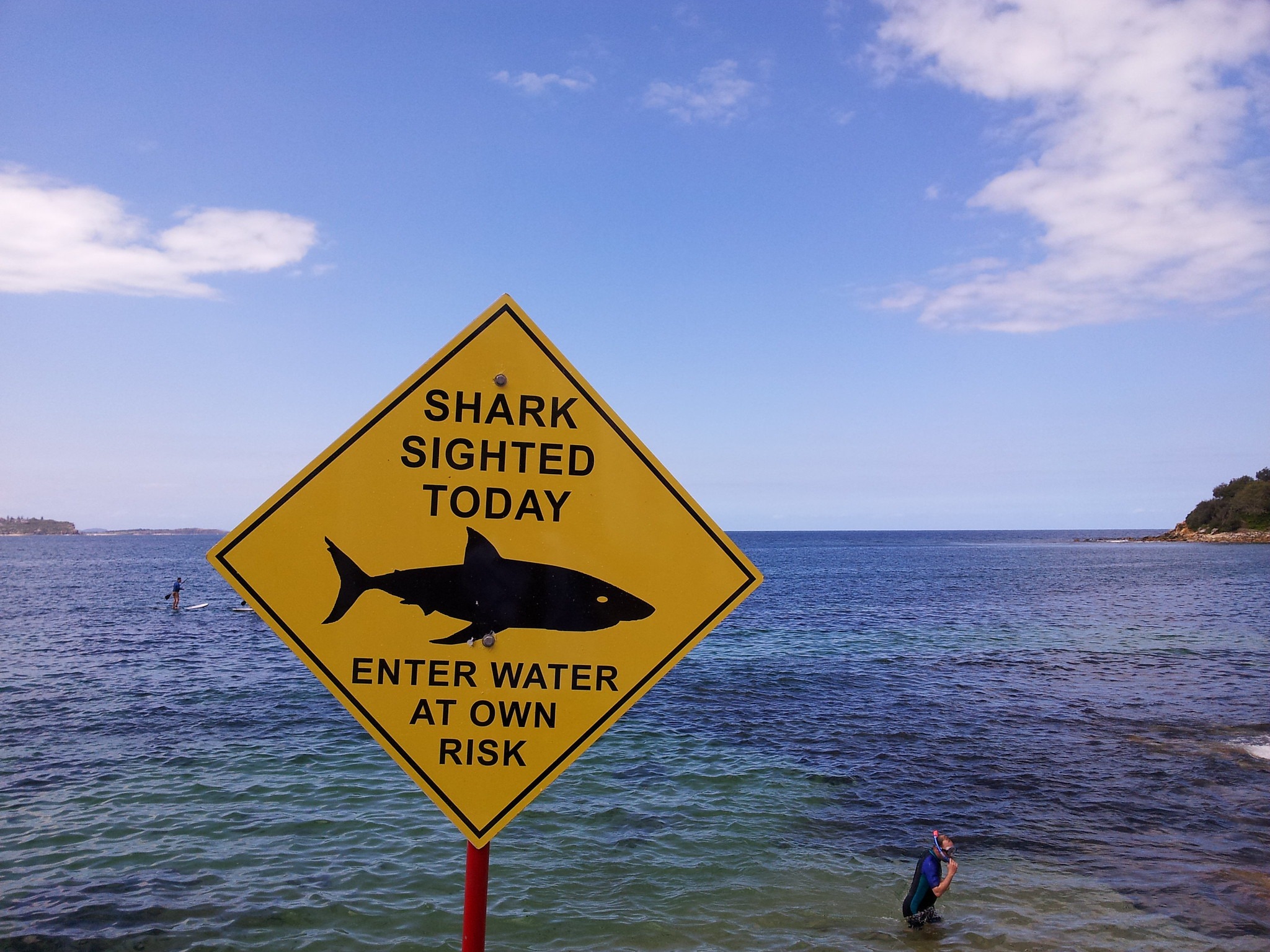
Shark warning sign at Manly Beach, Sydney (Picture Credit: Pranav Bhatt)
Sharks are a fact of life in Australia. Statistically, 85% of Australians live on the coast. We’ve probably all eaten shark meat at a beachside fish and chips, probably all seen a shadow or a fin in the surf, or heard someone shout “Shark!” and caught the next wave in to shore. We know all the rules: Grey Nurses and Wobbegongs are safe; Whites and Bulls are not; swim in groups; always have someone with a board; don’t push your luck around dusk or dawn; avoid cloudy or contaminated water; try not to look like a seal. The especially prepared (or paranoid, depending on how you look at it) have torniquets or belts handy – just in case.
But despite our best efforts, an average of eight shark attacks occur in Australia each year, one of which will be fatal. And that number is going up. In 2020, there were 22 attacks and eight fatalities, a number that amounted to 38% of global attacks, and 50% of global fatalities that year.
Last week, a man died in Sydney – the first fatality for the city in around 60 years. It was a reminder that the ocean will not be tamed, and we play in it at our peril. But though the water will likely be a little more somber in coming weeks, the sand won’t suffer from a lack of towels and beach bods. Life will go on, because for most Australians, this wasn’t a lesson that needed repeating; it’s been baked into our bones.
***
I grew up in a sleepy coastal town on a tiny mound called Ballina Headland that separates two of the most shark-attack-prone beaches in New South Wales. I can’t count the number of times I’ve seen a shark, or maybe just a shadow, darkening the crystalline green water and started dancing like a maniac, yelling for the surfers to bring themselves in. Once, the shark’s outline was so clear that it could have been cast by a shadow puppet, the shape perfectly silhouetted in a breaking wave. Another time, my brother watched, powerless, as a Great White rushed my dad on his surfboard. My brother sank into a trough between the waves and spent the next 10 seconds thinking he was going to be fatherless until dad finally crested, oblivious, the shark already on its way.
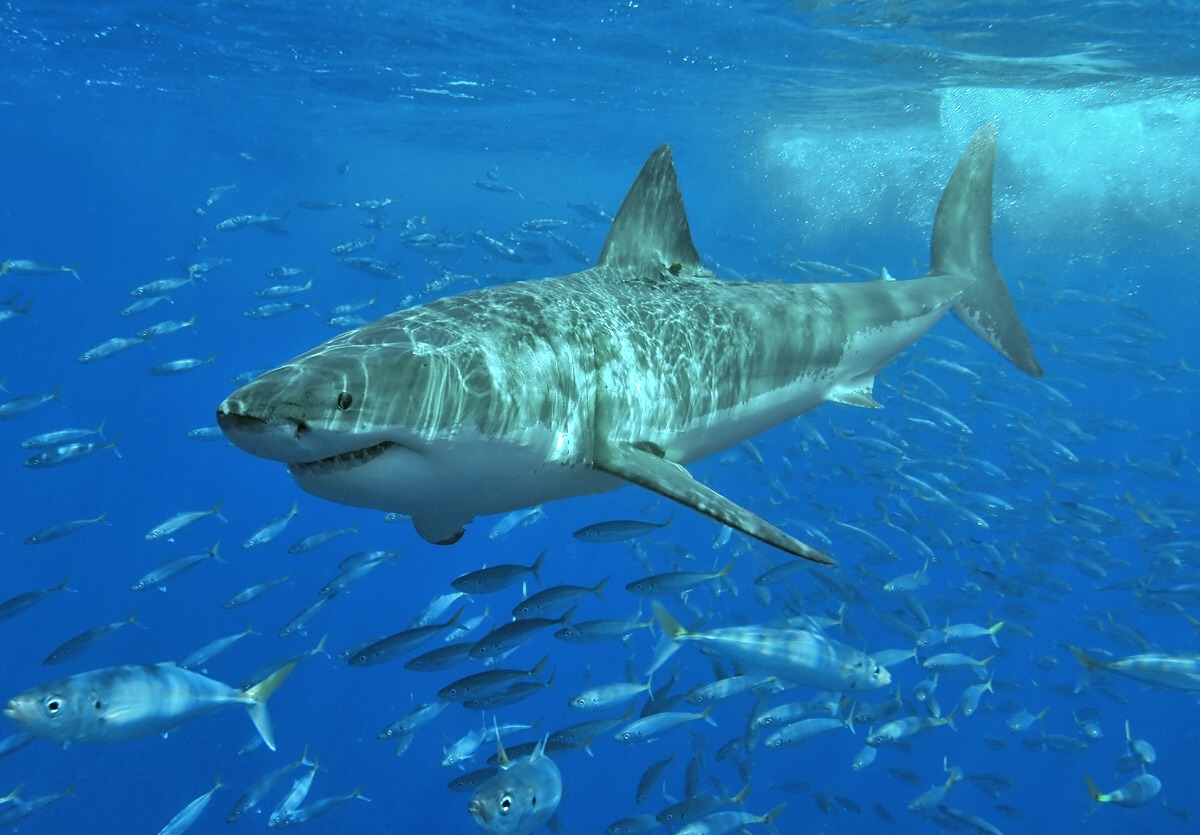
Great White shark (Picture Credit: Pterantula)
Officially, you’re more likely to die from a bee sting or having a vending machine fall on you than you are to die from a shark attack. But the official stats don’t account for the near misses, the terrifying sightings, the bunts, brushes, broken surfboards, and other close calls. When the police came blaring onto the beach with their sirens going and a megaphone warning us to get out of the water because there were four, four, 4-5-meter-long White sharks circling the beach, that incident wasn’t tracked. When our neighbor had the fins snapped off his surfboard from a shark bunt, but otherwise came out of it unscathed, that experience wasn’t recorded either. Another friend was hit from below and exploded into the air on a white plume, but he wasn’t injured and so the incident wasn’t noted. It doesn’t matter what the stats say. Every surfer knows, the next surf could be your last.
The official stats don’t account for the near misses, the terrifying sightings, the bunts, brushes, broken surfboards, and other close calls.
And yet, we can’t stay away. The surf, the sand, the waves, the water…they’re part of who we are, part of the Australian identity. We couldn’t forsake the ocean if we tried.
For half the year, every Sunday morning, hundreds of thousands of fluorescently-clad Australian children aged 5 to 14 spend hours at the beach doing surf-life saving drills. This ritual, Nippers, is practically an Australian religion. The children drag boards twice their size up and down the beach, launching them into the surf and then paddling around buoys in tight little circles just to prove that they can. They swim back and forth dragging each other through the waves, practicing their half-drowned swimming techniques. They learn CPR, how to identify a rip, and other generalized surf safety rules. As they get older, they learn how to treat jellyfish stings and shark bites. And it works. Nippers, both the program and the students, save lives. But more importantly, Nippers immerses these children in the ocean. Every new generation of Australians grows up respecting and appreciating it; the ocean becomes a part of who we are, how we relate to our country and its wild, dangerous beauty.
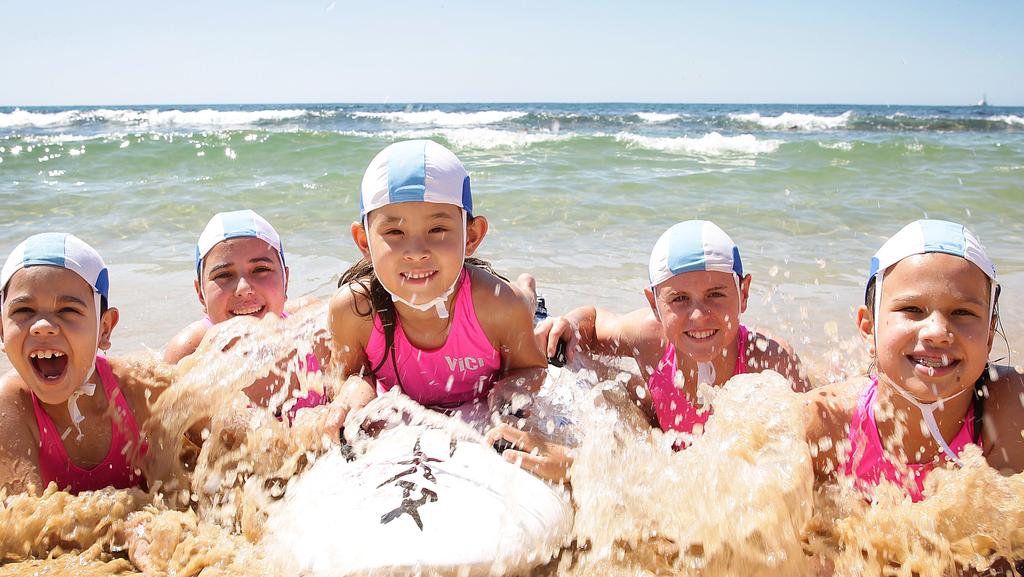
An incoming class of South Maroubra Nippers in Sydney
In this context, sharks are real life’s equivalent of the big bad wolf, the fairy tale’s reminder that no matter how beautiful nature is, it is also dangerous. Every time I duck a wave and feel the salt stinging my eyes, every time I roll over a crest behind the break or feel the swell tugging on my hair, I know that no matter how many hours I spend covered in spindrift and salt, the ocean will never belong to me; I have to share it with the sharks.
I know that no matter how many hours I spend covered in spindrift and salt, the ocean will never belong to me; I have to share it with the sharks.
Because of this, I both love and hate sharks. Love them because they are a symbol of the ocean, the power and ferocity that lurks beneath the surface; and hate them because they remind me that the ocean, this thing that I love, will never be truly safe for me. I am an interloper. And as much as I might be tempted to assert my human dominance and sweep the sea clear of these predators, doing so would fundamentally change what I love about it.
The truth is, sharks are part of the ocean. It’s not just that sharks exist in the ocean; the ocean needs them. In rare cases, like 2014 in Western Australia, a local government will announce a shark cull after a fatal shark attack only to back down after fierce community and scientific opposition. Not even the brutal, graphic footage of Sydney’s latest attack has overturned community opposition to shark culling. Because at the end of the day, that’s the deal we make. If we want the pleasure of oceanside living, we have to accept the occasional death-by-shark.
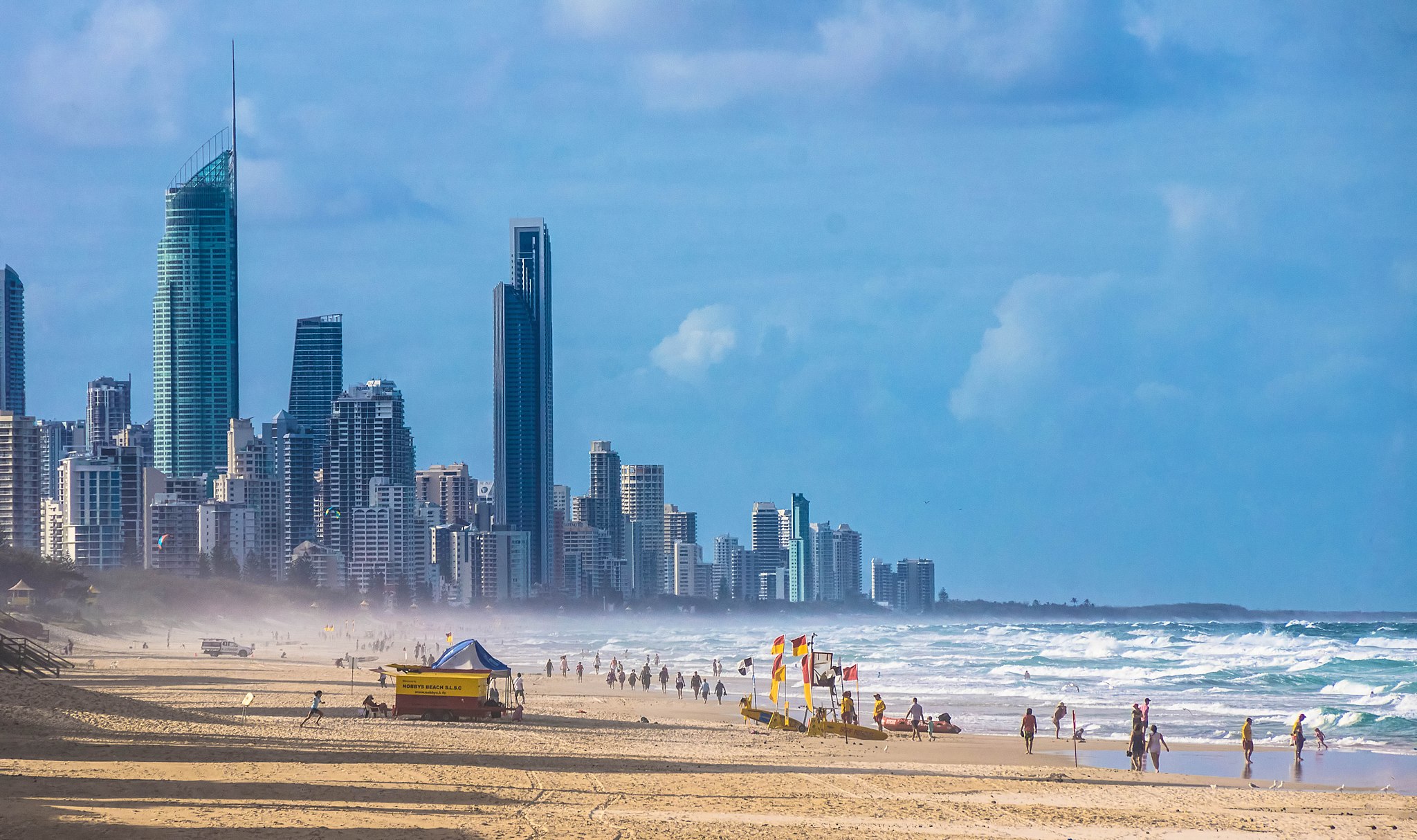
Beach at Gold Coast (Picture Credit: Petra Bensted)
What we can do, though, is use technology to minimize these deaths. Though sharks rule the seas, humans rule the land for a reason. After a slow start, Australians are applying our technological superiority to the water to make it safer for both apex predators. Up and down the coasts, meshing and lethal drumlines are being phased out in favor of more humane shark deterrents. The nets in question are almost 100 years old and most local councils have voted to have them removed because of their indiscriminate cruelty. Instead, SMART drumlines (Shark-Management-Alert-in-Real-Time), which have already been tested and deployed in hot spots like my hometown, are slowly being rolled out around Australia. (Because of the Alert, less than 0.25% of White sharks caught on SMART drumlines are killed as teams can immediately be deployed to release them). A shark caught on a drumline will also be tagged, allowing it to be monitored by listening stations which receive data from tags and transmit it to authorities and the Shark Smart App. Drones and helicopters patrol the beaches, on lookout, and personal protection devices are constantly being developed, from carbon fiber wetsuits, to “bio-inspired camouflage,” and devices that pulse magnetic or electric signals.
But as the frequent attacks and less frequent fatalities prove, these measures will never guarantee safety. And on some days, like last Thursday, when a diving instructor named Simon Nellist was eaten by a Great White, I recall one of my most vivid memories of sharks.
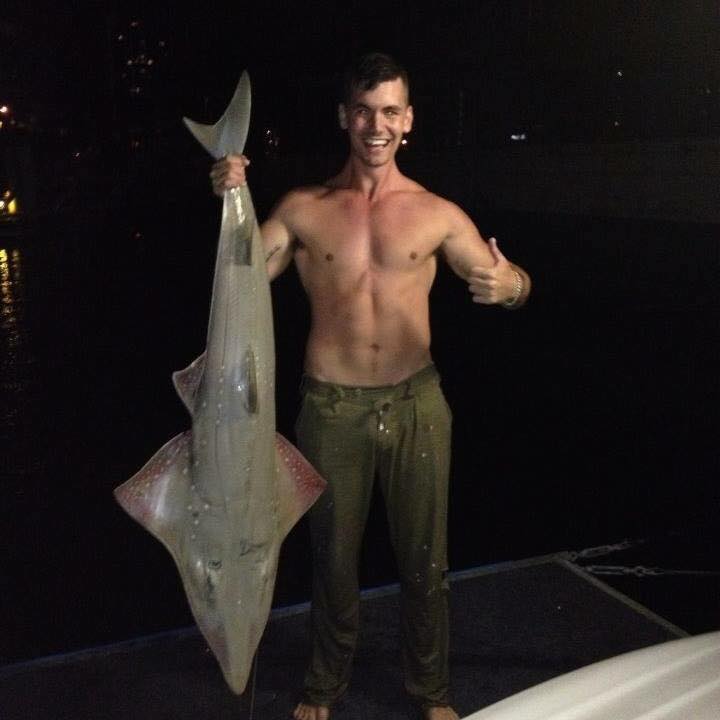
My brother with a shark he caught from a kayak
I was 10, at school, and I had eucalyptus menthol cream smeared in think globs under my nostrils as my teacher dissected a small, 1-1.5 meter shark as a surprise extra-curricular. He’d taken the time to contact the local trawlers and ask for any shark specimens that they might inadvertently catch. I don’t remember what species it was, but I watched, enthralled as my teacher showed us its rows upon rows of teeth, pulled its guts out and produced a partially digested octopus from its stomach. He had to hack through the shark’s underbelly, belying the comics I’d read in which the hero easily slides a knife through a shark’s side as it swims past. And even though it was dead, I had to steel myself to touch its grey hide. I was unprepared for it to be raspy, almost prickly under my fingers. I had thought that it would be smooth, supple like neoprene, and its rough, sandpapery texture frightened me all over again. I had thought that I was in control; that here, finally, I could overcome my fear of this watery nightmare. After all, the shark was dead and I was alive, watching it being dissected. But even in death, the mystery and magnetism remained, the pull of the ocean no less strong.
I wasn’t in control; I was small, ignorant, and afraid. And when it comes to the ocean, perhaps I always will be.
